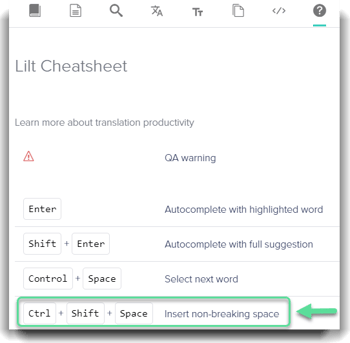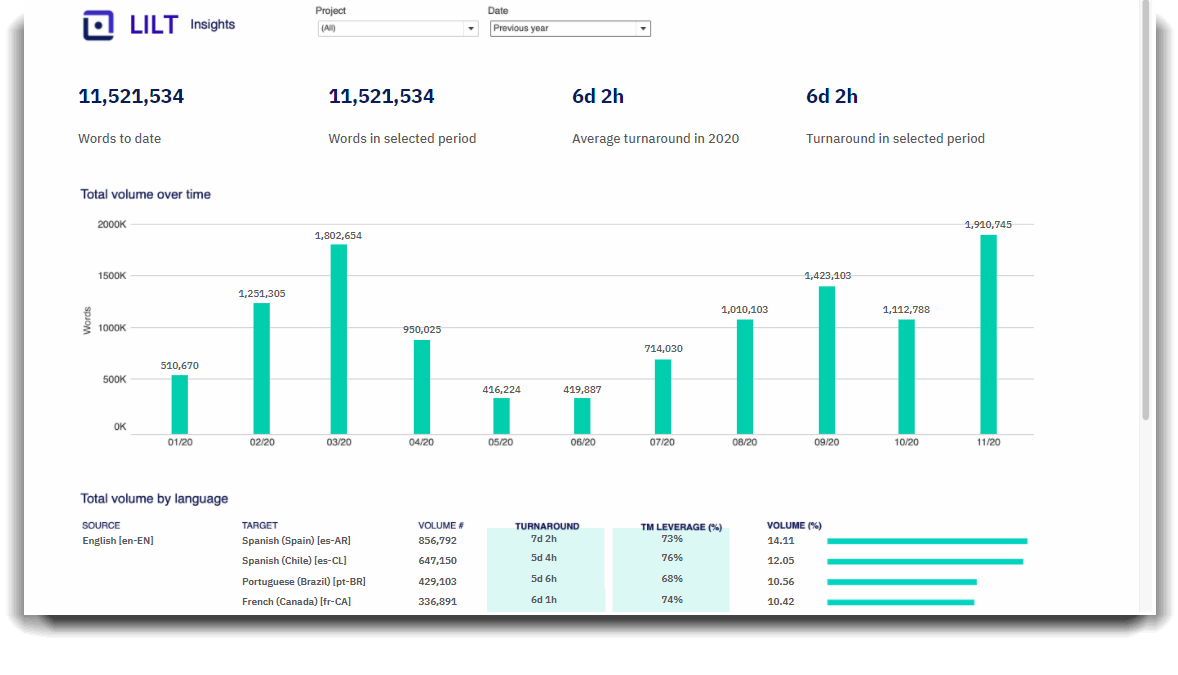October '20 Lilt Updates

|
Welcome to the October 2020 Newsletter. Thank you so much to all of you who came out and joined us at the end of October for Lilt Ascend 2020. Ascend 2020 brought together leaders from across the localization industry for discussion surrounding leading successful localization orgs, the role of AI in the future of work, and exciting developments around machine translation. We heard from a number of our customer partners, MT and AI thought leaders, and last but not least from our very own Lilt colleagues. For those who weren’t able to join us, never fear! Recordings of all conference sessions are available here. While we’re sad it’s over, Lilt has much more in the works. Read on to learn more. • • • Single Sign-on (SSO)Forget your black book of passwords - single sign on is here! Convenience and ease is the name of the game with our new and improved sign-on. SSO allows users to securely authenticate and log in to multiple applications and websites using a single username and password, saving the hassle of having to remember multiple different passwords and creating an easier customer experience. For more information, please check out Single Sign-on in our knowledge base. Whitespace HandlingThe Lilt CAT editor now better supports the representation of whitespace characters with new hotkeys: Non-breaking space: For non-breaking space, users can now enter it using Control + Shift + Space:
Tab: Users can now Tab indent using the → key to Tab to the right. As a result of these hotkeys, the Tab key will now be used to enter the Tab whitespace character. MT suggestions in the editor will only autocomplete using the Enter/Return key. |
Platform Quality ImprovementEvery platform requires maintenance! In addition to developing new features, the Lilt Product and Engineering teams spent substantial time in October monitoring and auditing system performance, and resolving system bugs to improve platform quality and ensure optimal performance. With our continuous improvement model, Lilt strives to provide a better and better customer experience every day. Import TMs Into the Concordance OnlyWhile TMs have traditionally been used to train Lilt’s MT, quality and consistency of TMs can vary widely, making some less suitable as MT training sets. However, all TMs can still serve a purpose! With this feature, TMs in Lilt can be used only for search and reference without being used to train the MT. That way, TMs that may have bad entries won’t negatively affect MT performance.
• • • Eager for more? Sign up for our monthly newsletter here to stay up to date on Lilt news. Thank you for reading, and thank you for translating with Lilt. Cheers, The Lilt Team |
|
|


-2.png)